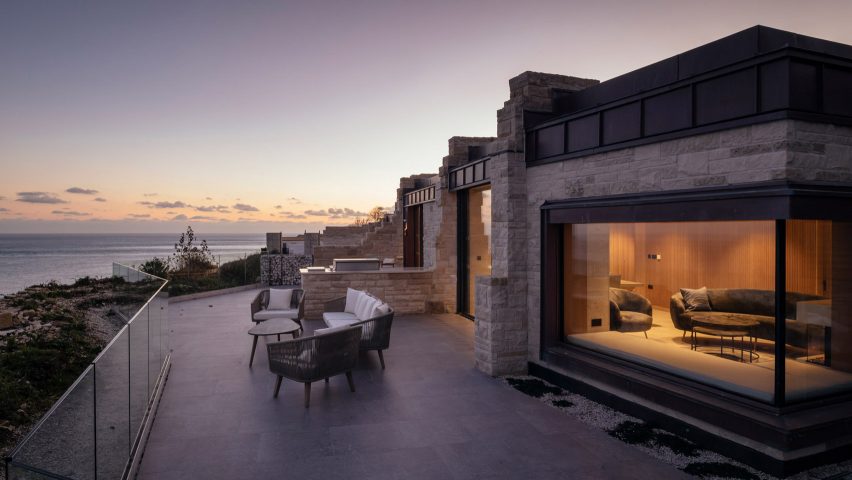
Morrow + Lorraine completes Clifftops luxury lodges on England's Jurassic Coast
London studio Morrow + Lorraine has completed a group of five seaside holiday homes in Dorset, England, featuring stone dividing walls that resemble the irregular surface of the nearby cliff face.
The Clifftops development comprises five lodges designed by Morrow + Lorraine for a site within the Pennsylvania Castle Estate, which is located on the Isle of Portland – a tied island linked to the mainland by a barrier beach.
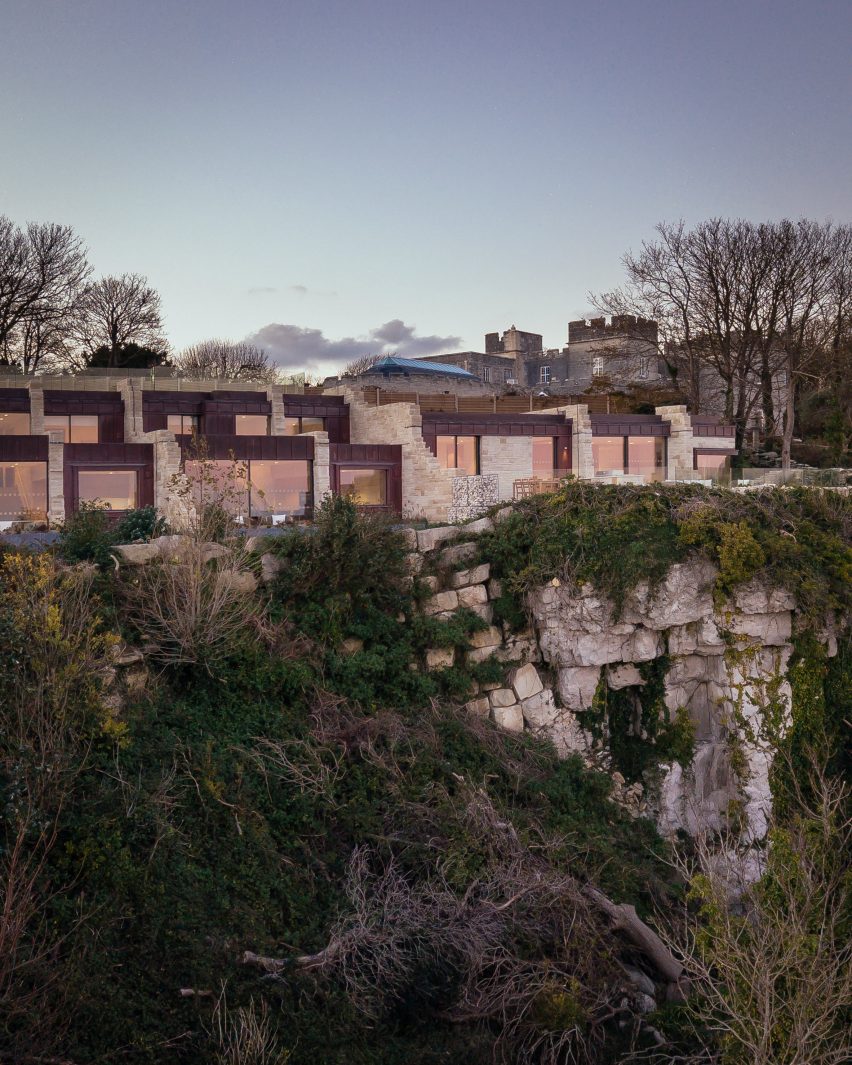
The on the Jurassic Coast – a UNESCO-protected site where coastal erosion has exposed rock formations dating from the Triassic, Jurassic and Cretaceous periods.
Clifftops is positioned between two important historic sites; the partially ruined Rufus Castle and Pennsylvania Castle, a Gothic Revival mansion. The lodges provide additional accommodation for large parties that book out the estate for private events.
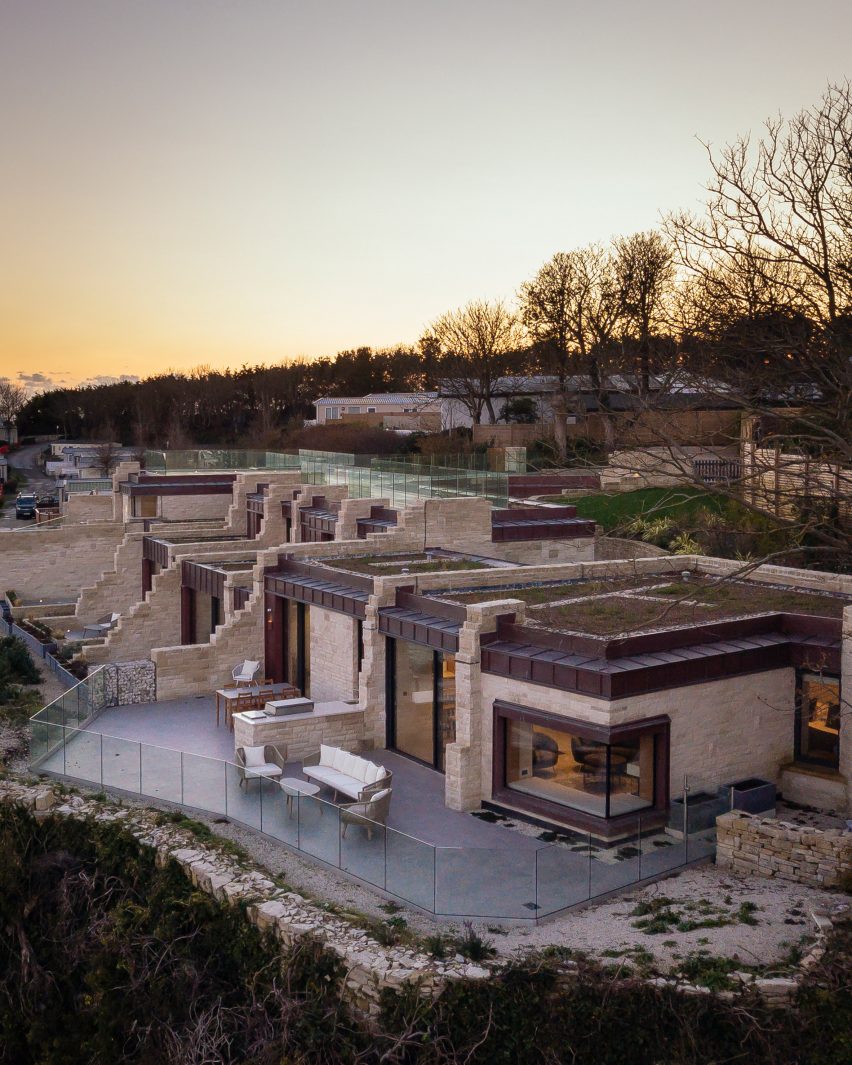
A key requirement of the building's design was the need to sit unobtrusively in its historic surroundings and complement the unique character of the coastal landscape.
"Taken in tandem with the extreme sensitivity of the setting, a clear design concept emerged: the building should appear hewn from the ground, rather than built upon it," said the architecture studio.
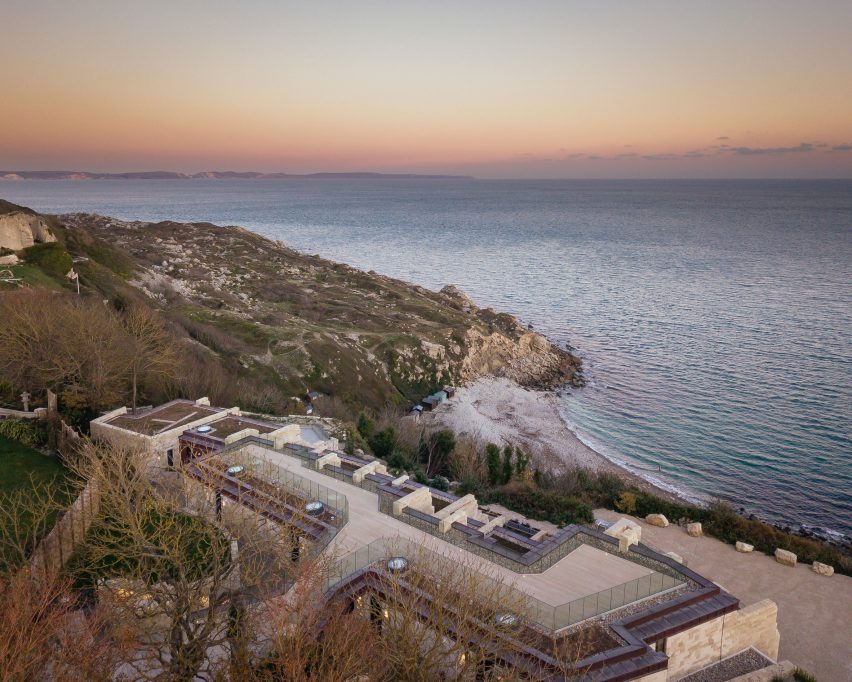
The lodges are partially embedded in the sloping site to reduce their visibility from the rest of the estate. Their clifftop location required major geotechnical works to provide suitably robust foundations.
The building is positioned directly above the site of a historic landslip, with large boulders used as buttresses to prevent any further earth movement. Eight ground anchors tie the site to the solid bedrock beneath it, with 64 rotary bored piles helping to secure the foundations.
"The design carried the responsibility of highly technical requirements to ensure the stability and safety of this dramatic and ancient site," said the studio's director, J-J Lorraine, "meanwhile bringing quiet, reflective moments through the architecture that bring joy and pleasure to the guests."
A set of steps leads down from the castle grounds to a sunken pathway providing access to the accommodation. A ramp also ascends from the site entrance to a roof terrace extending across four of the lodges.
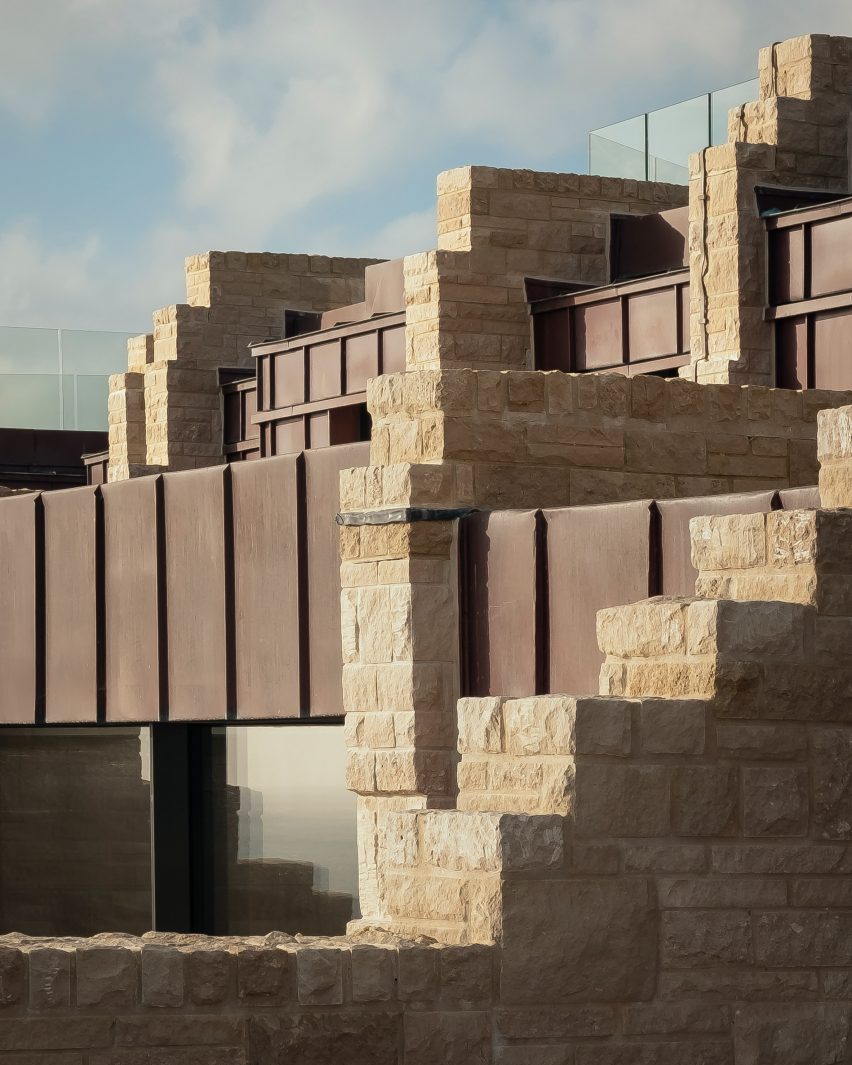
The choice of local Portland stone for the building's exterior helps to tie the project to its surroundings. The white-grey limestone is quarried on the island and was used in the past for major public buildings including St Paul's Cathedral and Buckingham Palace.
When the project was at the planning stage, Dezeen reported on a demand from English Heritage that Portland stone should be used for the external walls to emphasise the link with the building's location.
The conservation body also called for "something craggy and unobtrusive, subtly and wittily appearing to be a part of the quarry, for instance in the spirit of a wild hermitage as it were designed by an eccentric 18th-century nobleman".
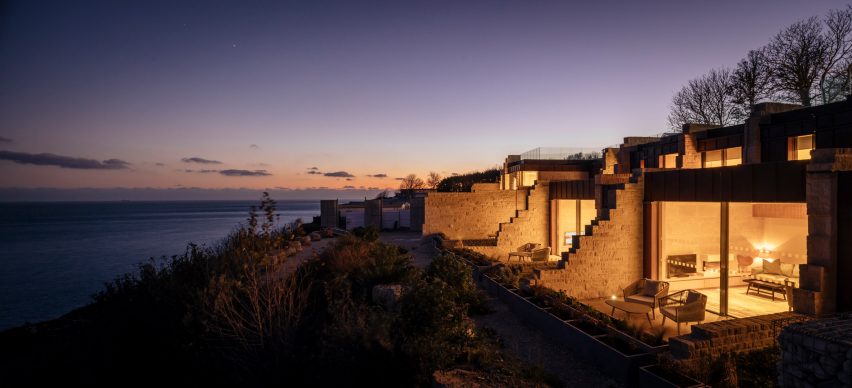
On the side of the building facing the sea, roughly cleaved stone blocks form dividing walls between the lodges. The walls step down in height as they extend out from the facades, evoking the groyne walls used to prevent erosion on many British beaches.
The other main material used for the building's roof and facades is untreated copper, which will gain patina and turn green over time to create a stronger connection with the natural surroundings and landscaping by Coe Design Landscape Architecture.
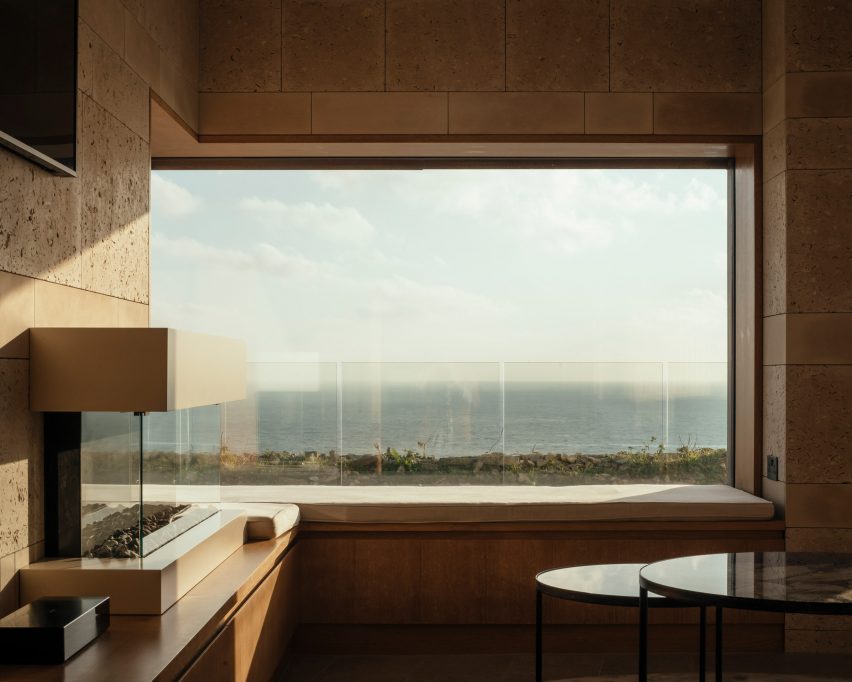
The stone walls are rotated three degrees from one to the next to optimise views for the occupants whilst minimising the chance of producing reflections that could distract boats out at the sea.
The exterior walls appear to extend into the living spaces of each lodge, where the rough stone is replaced with smoother blocks. The internal walls feature a distinctive surface texture that reveals their composition, including traces of fossilised sea creatures.
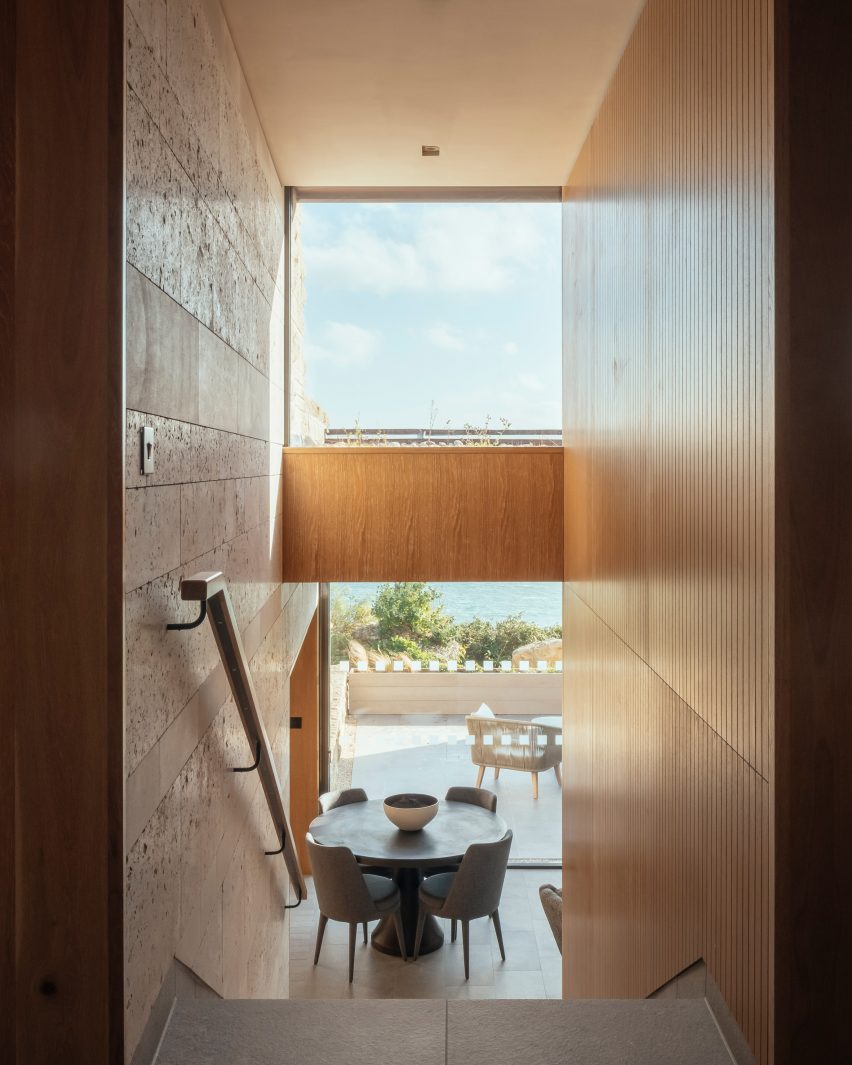
The rest of the material palette is chosen to complement the warm stone. Oak joinery and wall panelling is used throughout the kitchens and living spaces, including for the minimal window frames, door frames and staircase hand rails.
Each lodge features full-height sliding doors that connect the lounge areas with private terraces looking out onto the English Channel.
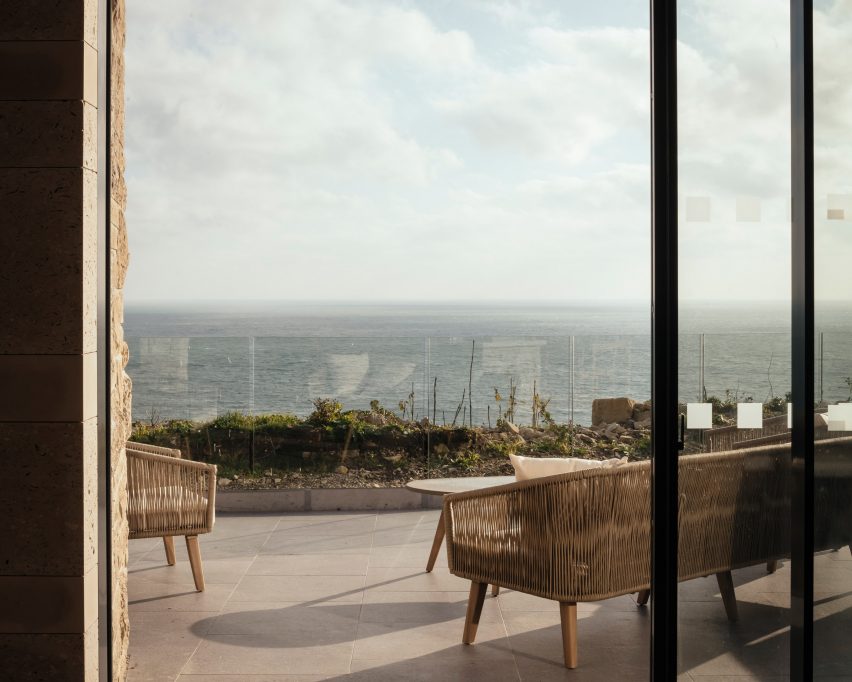
Morrow + Lorraine was established in 2009 by Julian Morrow and J-J Lorraine. The firm create workspaces, housing, hotels and retail buildings that are driven by functionality and sustainability.
Elsewhere on the Isle of Portland, architect David Adjaye designed a memorial to extinct species that was to be built using Portland stone. The project stalled after failing to attract enough funding, with reports in 2018 suggesting an alternative proposal was under consideration.
Photography is by Jim Stephenson.